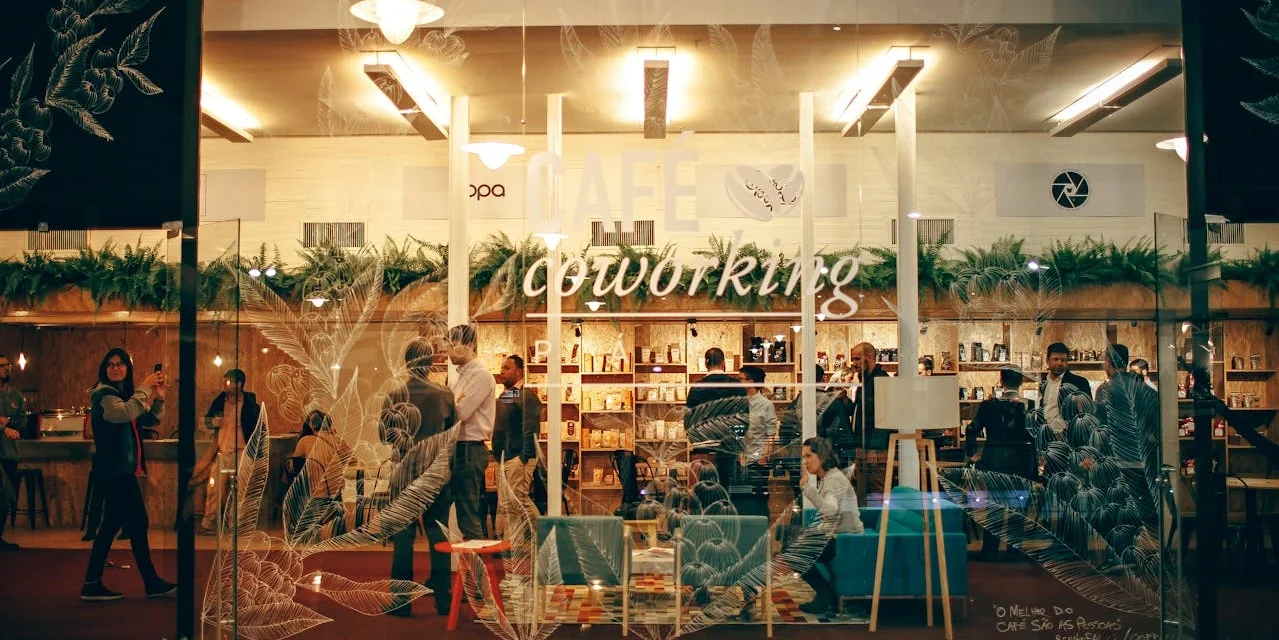Coworking was quickly established as an important trend in the professional world. Born in the early 2000s, this concept of shared spaces altered work methods, satisfying a growing need for flexibility and collaboration. As this practice gains popularity, it also affects the real estate market, both commercial and residential. While some see it as a simple response to recent developments in the world of work, others perceive coworking as a lasting change.
Discover the evolution of coworking, its influence on the real estate sector and the opportunities it presents for investors.
The emergence of coworking: an expanding trend
Coworking development is explained by several factors. The growing number of workers, small businesses and new self -employed companies, as well as the generalization of teleworking, have created a greater need for flexible and shared spaces. According to a study conducted by StatisticalThe number of coworking spaces worldwide has reached 26,000 in 2021against 14,000 in 2017, a growth in 86 % in just four years. This figure continues to grow, with forecasts of an annual increase in 13.4 % by 2025.
This expansion reflects a fundamental change in the way professionals are considering their work environment. While companies have to face economic uncertainty and fluctuations in their space needs, coworking offers flexible and modular solutions, far from the limitations of traditional commercial leases. In addition, this trend is in a post-pandemic context, where teleworking has been established as a standard, deeply modifying the demand for office real estate.
Coworking impact on commercial real estate
Coworking quickly redefined the commercial real estate market. Traditionally, companies signed long -term leases, sometimes in 10 or 15 yearsInvolving them in rigid contracts. Coworking, on the other hand, offers more flexible solutions, allowing companies to rent spaces for much shorter durations, even during the day. This allows small businesses and new companies to reduce their costs, while accessing modern spaces, often located in the central neighborhoods.
Large coworking operators such as Wework, SpacesEITHER Regus They have contributed greatly to the development of this model. Today, about 30 % of offices in the United States It must be transformed into coworking spaces by 2030, according to a study of JLLagainst alone 5 % in 2020. Companies, large and small, favor these spaces for their ability to adapt quickly to their needs. This development changes the economic model of commercial buildings, creating various sources of income and a lower vacancies.
In addition, coworking companies are increasing internationally, attracting workers around the world, which makes it a popular solution in the main cities of the world such as Paris, London or New York. Therefore, the coworking model has allowed many owners to maximize their income by renting their spaces to a variety of customers.
The influence of coworking in the residential sector
In addition to its impact on commercial real estate, coworking also affects the residential market. The concept of co -livingFor example, combines spaces of life and work, satisfying the needs of a new generation of workers, often freelancers or entrepreneurs, who seek to optimize their daily life. In these residences, coworking spaces are directly integrated, allowing residents to have a work environment while living in a collaborative community.
A recent study of Caballero Frank establishes that the co -living market could be worth $ 550 billion for 2030. This trend satisfies the growing demand, especially in the main cities, where the cost of living hinders access to private offices for young professionals. By facilitating access to shared work spaces, while offering housing at competitive prices, these new real estate projects capture the attention of investors.
On the other hand, the boom in coworking has led to the creation of decentralized work spaces. In suburbs and peri -urban areas, emerging coworking centers, offering alternatives to work in the city center. This trend contributes to a geographical rebalance of real estate demand and opens new perspectives for investors who seek to diversify their portfolio.

OPPORTUNITIES FOR REAL ESTATE INVESTORS
The boom in coworking generates attractive opportunities for real estate investors. Changes in demand in work spaces allow them to diversify their income and capture new markets. Here are some clues to explore:
Conversion of vacant spaces
The COVID-19 crisis has left many vacant commercial spaces. For buildings and owners of buildings, converting these spaces into shared offices can be a profitable solution. This not only allows generating additional income, but also revitalizing the areas that lose speed, attracting new economic actors and stimulating local activity.
CO-WILL AND RESIDENTIAL COKING
The projects that combine coworking and housing, often designated under the term of CO -Living, are booming. These solutions optimize the use of spaces and meet the growing flexibility needs of young professionals. Investing in this type of project can offer significant investment performance, given the high demand for these spaces.
Portfolio diversification
Investing in coworking spaces also allows investors to guarantee the diversification of their income. Unlike long -term leases, these spaces are rented by a multitude of customers, thus reducing the risk of vacancy. A study of International necklaces has shown that occupation rates in coworking spaces are on average 85 %even reaching 95 % In some big cities.
The challenges to overcome
However, coworking is not free of challenges for investors. On the one hand, competition is difficult, especially with the appearance of new operators. On the other hand, margins that benefit from coworking spaces can be low, which requires a high occupancy rate to be profitable.
In addition, the evolution of work habits could influence future demand in coworking. If teleworking continues to be generalized, it is possible that the need for shared spaces decreases in certain regions. However, the flexibility and diversity of the services offered by coworking spaces could allow them to adapt to these new realities.
Finally, global economic uncertainty remains a factor to consider. The disturbances linked to the economic situation can delay the expansion of coworking spaces, especially in countries where the real estate market is already saturated.
Coworking has transformed the landscape of work and, by extension, that of real estate. While flexibility becomes an imperative for many companies and workers, coworking seems to be a good start to register in the real estate landscape, both commercial and residential. For investors, this trend offers many opportunities, provided you understand market developments and anticipate the future users’ needs. If the challenges are numerous, the growth prospects are equally promising. The future of coworking will depend on its ability to continue adapting to a changing world.





